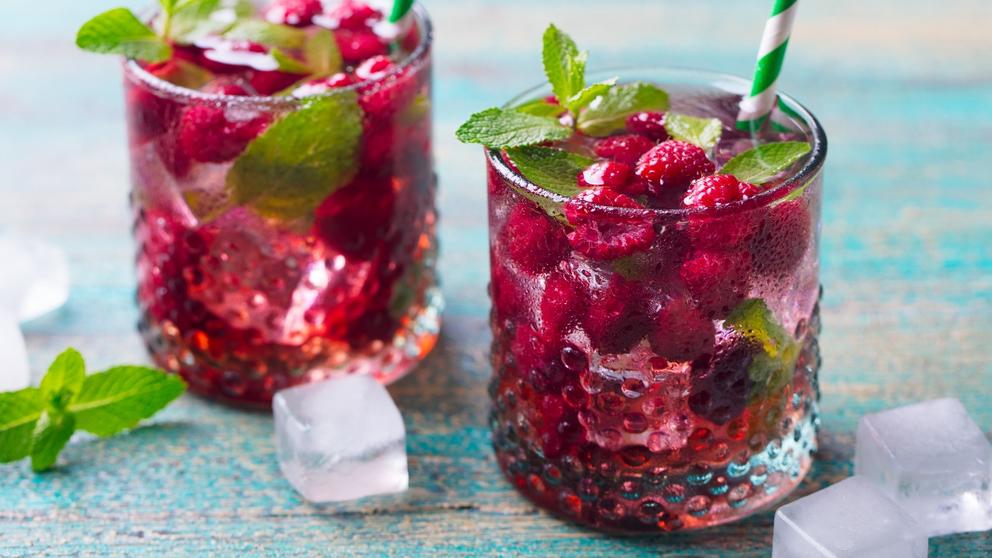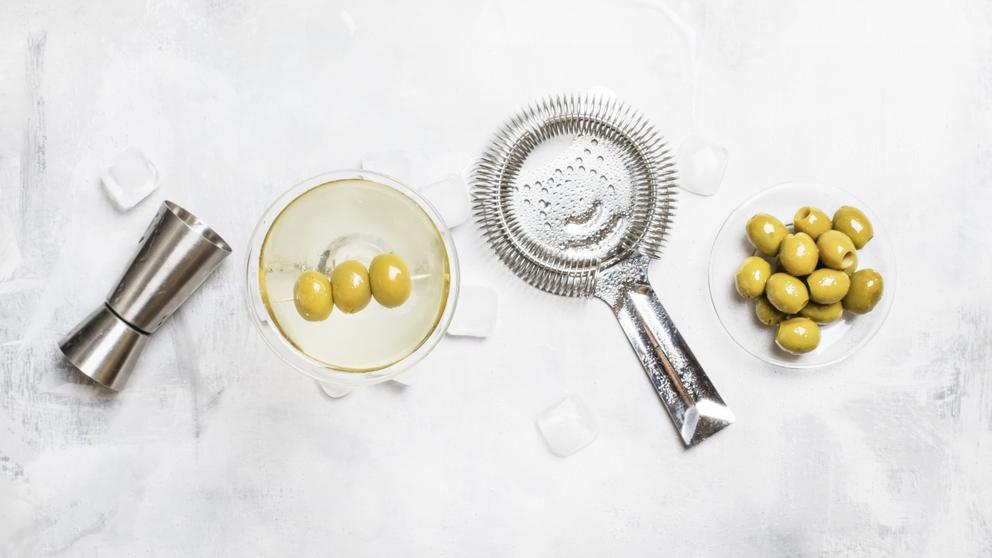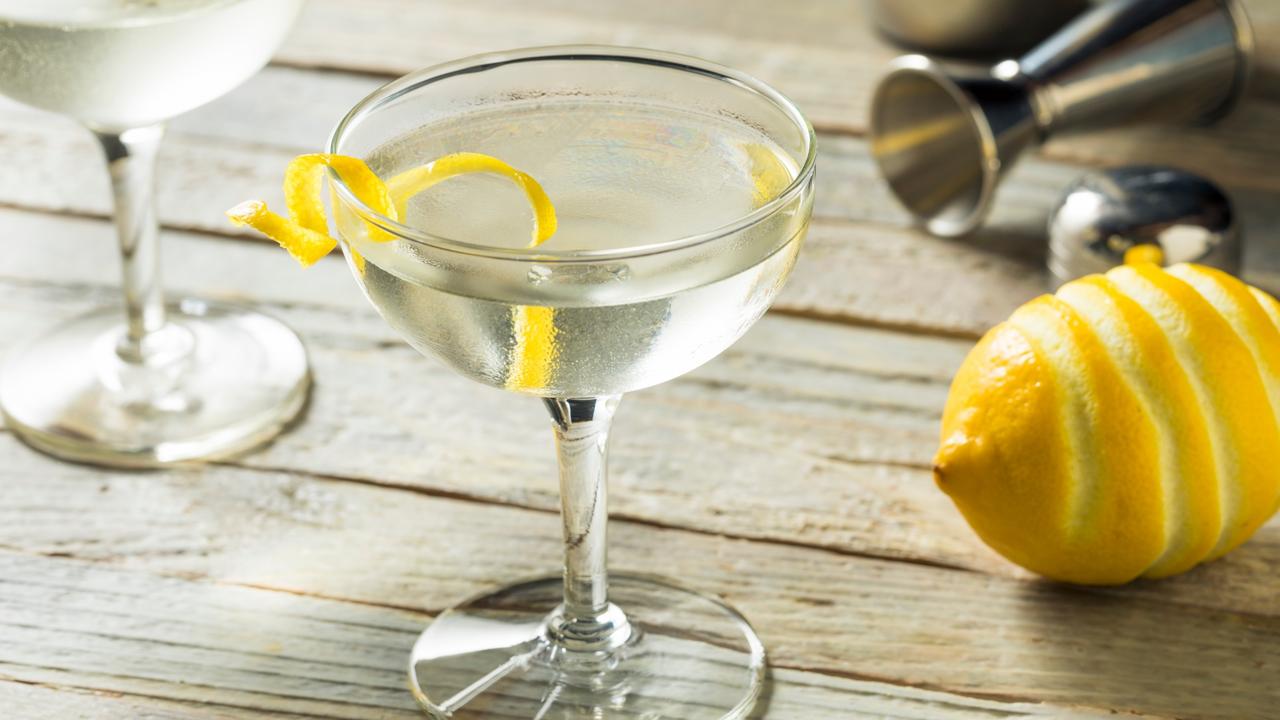From the ‘ice and a slice’ in a Gin and Tonic to the orange, cucumber and mint adornments of a Pimm’s cup. Cocktail garnishes are there to complement drinks with a medley of extra flavours – as well as being a work of art in themselves!
But what are the best garnishes and techniques out there?
Here are 7 creative cocktail garnishes and techniques…
1. Citrus slices

These are standard garnishes and you'll find them even in the most rudimentary of bars. Lemon, lime and orange slices can be added as whole or as half-slices directly into the glass with a mixed drink. It’s not the most sophisticated cocktail garnish, but it still enhances the presentation and adds an extra hint of citrus to your drink.
2. Citrus twists
Citrus peel garnishes offer some strong flavours, from sweet to sour, and can be used in various ways. The sliced peel of the fruit infuses drinks with citrus oils, adding to the aroma more than the flavour. Most commonly, a lemon or orange twist garnish is chosen by bartenders. However, as a lemon garnish for cocktails goes, the twist is the most popular!
Making a twist definitely requires a bit of skill compared to the other cocktail garnish techniques. A citrus twist is made in various ways. You can use a knife or a vegetable peeler to peel off the citrus skin. It's essentially the outer edge of the lemon or orange cut into strips and twisted to release the citrus oil.
Some prefer to just keep it simple with just an off-cut from a lemon peel. Others cut long thin strips carefully from the peel that can be wound into dainty spirals. This gives clear drinks, like a Vodka Martini, an elegant finish.
3. Citrus wheels

For the more tropical, rum or tequila-based cocktails, such as a Margarita, Daiquiri or Caipirinha, you might find that a citrus fruit wheel is more appropriate.
The wheel is a slice of citrus fruit with a single cut to the centre from the edge, so that the wheel can be perched on the edge of a glass, leaving a taste of summer. A wedge of lime or orange can be used to create a similar effect.
Away from fresh garnishes for a moment, in recent years, wheels of dehydrated citrus fruits have risen in popularity. These impart a more subtle and bitter taste and are practical at the bar because of their longer shelf life and speedier service time. They can be made by heating sliced citrus fruits in an oven at the lowest setting and drying them out for up to 5 hours. Simple!
4. Fresh fruit garnishes

Who doesn't like fresh fruit garnishes with their drinks?
Cherries can add some bright colour to a cocktail but they are best fresh, rather than artificial old-school cocktail cherries. Adding up to three cherries on a stick can bring out the rich flavours for a sweet Manhattan or a Cherry Blossom.
They can also be paired well with amaretto, brandy or Grand Marnier, and can also be used for the many cherry versions of old classics, such as the Cherry Daiquiri or the Cherry Cosmopolitan.
Fresh summer berries can also add a tasty edge to many cocktails, such as the British classic, the Bramble. It's made with gin, lime juice, crème de mure and a garnish of skewered blackberries. A lime wheel may also be used to contrast the deep, bloody flavours with a citrus tang.
A triangular wedge of pineapple is often well suited to the rim of a cocktail that contains rum, pineapple juice, cream of coconut or lime juice, such as a Piña Colada, a Pineapple Martini or a French Daiquiri.
By contrast, cucumber has a more mellow and cool taste, and has seen a recent increase in popularity. The vegetable can be used to garnish drinks with gin, vodka, lime and mint, and an easily-carved cucumber ribbon goes well with a Hendrick's Gin & Tonic.
All you need is a sharp paring knife and you'll find an almost endless range of creative possibilities, including twists, ribbons and even cucumber flowers.
5. Savoury garnishes

For savoury garnishes, plain, green olives are usually used. But it's important to make sure they are washed first so the oil does not overpower the drink.
Olives are the classic garnish for a Dry Gin Martini and part of the bartender basics. Tradition calls for them to be placed on a stick or skewer in odd numbers, usually one or three. Occasionally, mini gherkins can be used instead, and also make a great garnish.
A small white cocktail onion can famously be used for the Gibson Martini, bringing a briny yet sharp and savoury note to this Martini variation.
Salt for the rim of the glass is also an essential component of a Margarita, and one of the easiest cocktail garnishes out there. Cut a lime, and use it around the edge of your cocktail glass. Then dip in salt - and that's it.
Lemon and chilli powder can be used in a similar way to spice up a Bloody Mary or Michelada.
6. Herbs and spices

Mint is such a strong flavour, offering a sweet coolness that finds a comfortable place as a flavouring in many drinks, such as a Margarita, Mint Julep and Mojito. This fresh herb garnish is easily made from sprigs of mint nestled among ice cubes at the edge of the glass, perhaps next to a lime wheel for a drink with more complex notes.
If you are looking for fresh herbs to bring out the flavour of your cocktails, you can try rosemary, basil, thyme or sage. You can also try some floral and botanical herbs, which work especially well with gin cocktails. Edible flowers such as nasturtiums or lavender also add to the presentation.
Spices such as nutmeg, a cinnamon stick and ginger bring warmth to the winter and are traditionally used in mulled wine or cider. They can also be used to spice up an Old Fashioned or Martini, whilst also working well with rum, fruit and cream cocktails.
In the burgeoning scene of craft cocktails, many new and interesting garnish methods can be found, including the use of plastic figurines, foodstuffs, and even complete meals at the top of a glass.
The Envoy in Hong Kong serves a Whiskey Sour topped by a biscuit lolly, while the Scottish Steak Club in Manchester serves Monkey Shoulder Whisky with a garnish of sirloin steak on a cocktail stick.
7. Flame cocktail garnishes

The last bar garnish on our list can have themselves firmly placed into the 'fancy cocktail garnish ideas' category!
When a piece of orange peel is squeezed and fire is held to the oil released, a short, explosive flame is produced and the oils are lightly caramelised on the surface of the cocktail. It's this that creates a simple and impressive visual pyrotechnic display across the top of a cocktail. This is the flame garnish.
The word flaming is often associated with a drink that is set on fire; like a flaming shot. But this isn't the technique we’re talking about here. Flaming a citrus peel is reserved for cocktails only.
By breaking or twisting the peel of a citrus fruit over the top of a finished drink, the oils are expressed and their aromas added to the drink as a final cocktail garnish. Research suggests that smell equates to 70-80% of the flavours we taste, therefore the changes produced through flaming the oils can dramatically alter the perception of the drink. This is what makes one of the best cocktail garnishes. It's a show in of itself , whilst contributing to the cocktails flavour. It's the 'TP' (total package)!
Orange is the most commonly used citrus peel but all citrus fruits can be used and the aromas and flavours of the oils will be different for each.
How to flame a drink
- Step 1 - Cut a circle of peel with pith, about an inch in diameter.
- Step 2 - Take a match and light it. Hold it above the rim of your cocktail.
- Step 3 - Take the citrus peel and hold it close to the flame for 5 seconds, pointing across the top of the cocktail. Make sure you don’t burn your fingers*
- Step 4 - With the peel still close to the flame, and pointing across the top of your drink, sharply squeeze the citrus peel to express the oils through the flame and across the top of the drink.
- Step 5 - Blow out the match, and voila!
This is one of the best garnish techniques out there. Some cocktails that can benefit from flaming citrus peels include Cosmopolitans, Negronis, and Sazeracs. Now, you know what to pull out during a cocktail party...
How to garnish a cocktail

A cocktail garnish is not hard to do or understand. There's a simple way to know how to garnish well. Ask yourself these questions...
- What's the dominant flavour of the drink? (orange, raspberry, mint, coconut)
- What type of drink is it? (Martini, Sour, Mojito)
- What type of glass are you using? (Martini, highball, rocks)
By answering these questions, you'll be able to get an idea of what garnish is best for the drink. Most classic cocktails already come with (or without) a garnish, so there's no need to reconsider the standard garnish. Don't reinvent the wheel!
However, if you're creating cocktails, it may be good to answer these questions when considering a garnish. You want it to be relatable to the cocktail itself. Cocktail cherries in a White Lady makes no sense at all. A basil leaf tucked into a Gin Basil Smash, however, makes perfect sense.
You also want to think about the drink. Martinis require simple, elegant garnishes placed on a stick. Margaritas like to keep it simple too with a citrus wheel or piece of fruit placed onto the rim.
Lastly, consider the glass. Some glasses suit simple garnishes, some glasses suit something a bit complex or chaotic. Take all of this into consideration and you'll find your perfect cocktail garnish.
NOTE: Consider that the cocktail may not even need a garnish. Sometimes garnishes can overcomplicate things, and take away from a great tasting drink. If it don't need it, don't do it!
Final thoughts
Be creative!
There are many rules out there with garnishes, such as the olive for a Dry Martini or the cherry for a Manhattan. So, a solid knowledge and practice in the principles and common combinations of cocktail garnishing is important.
But bartenders also need to be creative and experimental.
They should be encouraged to follow their instincts, push back boundaries and see what new innovations they can bring to the bar!
Happy garnishing!
Want to practice these unique cocktail garnish ideas in a bar professionally? With our bartender course, you'll be able to learn all about bartending (including the garnishes)! Come start your journey now...

